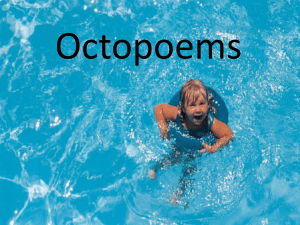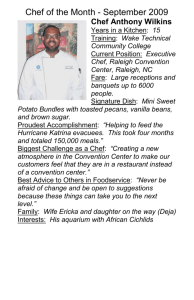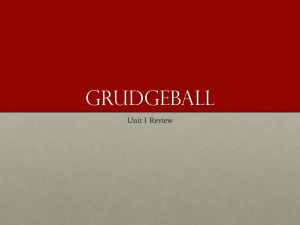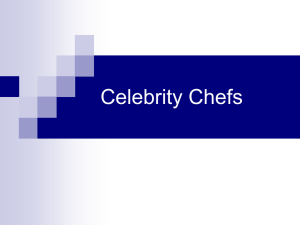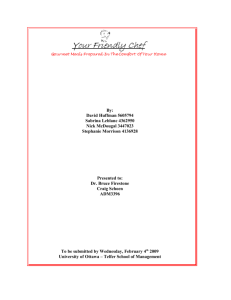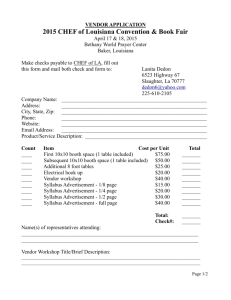Have Pan Will Travel
advertisement
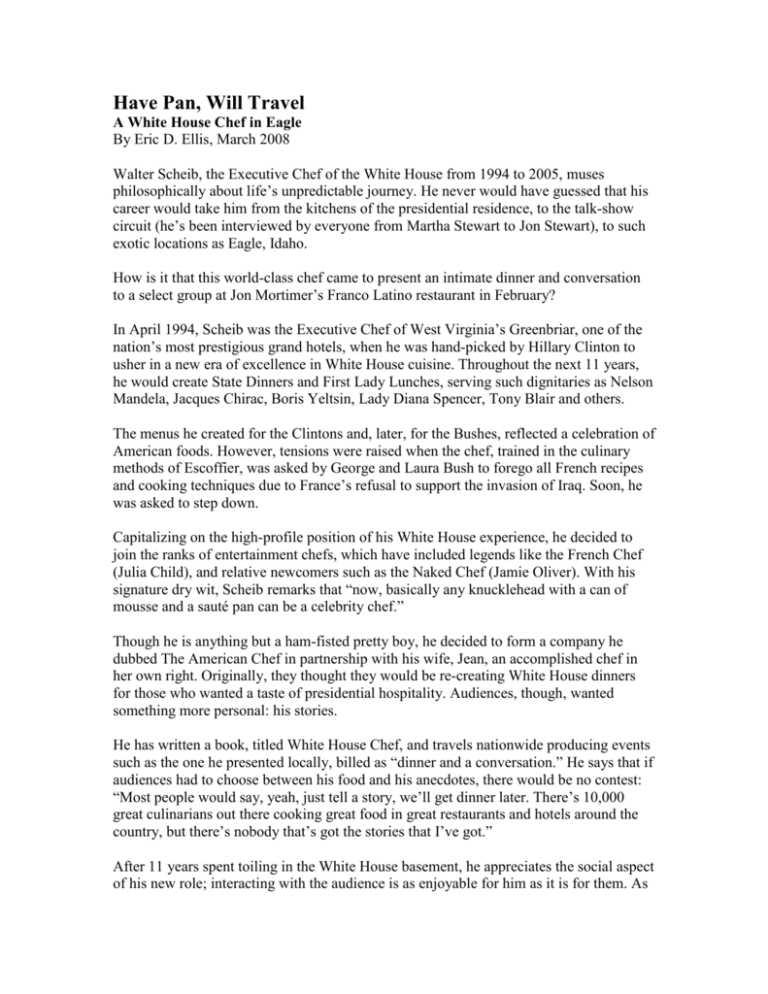
Have Pan, Will Travel A White House Chef in Eagle By Eric D. Ellis, March 2008 Walter Scheib, the Executive Chef of the White House from 1994 to 2005, muses philosophically about life’s unpredictable journey. He never would have guessed that his career would take him from the kitchens of the presidential residence, to the talk-show circuit (he’s been interviewed by everyone from Martha Stewart to Jon Stewart), to such exotic locations as Eagle, Idaho. How is it that this world-class chef came to present an intimate dinner and conversation to a select group at Jon Mortimer’s Franco Latino restaurant in February? In April 1994, Scheib was the Executive Chef of West Virginia’s Greenbriar, one of the nation’s most prestigious grand hotels, when he was hand-picked by Hillary Clinton to usher in a new era of excellence in White House cuisine. Throughout the next 11 years, he would create State Dinners and First Lady Lunches, serving such dignitaries as Nelson Mandela, Jacques Chirac, Boris Yeltsin, Lady Diana Spencer, Tony Blair and others. The menus he created for the Clintons and, later, for the Bushes, reflected a celebration of American foods. However, tensions were raised when the chef, trained in the culinary methods of Escoffier, was asked by George and Laura Bush to forego all French recipes and cooking techniques due to France’s refusal to support the invasion of Iraq. Soon, he was asked to step down. Capitalizing on the high-profile position of his White House experience, he decided to join the ranks of entertainment chefs, which have included legends like the French Chef (Julia Child), and relative newcomers such as the Naked Chef (Jamie Oliver). With his signature dry wit, Scheib remarks that “now, basically any knucklehead with a can of mousse and a sauté pan can be a celebrity chef.” Though he is anything but a ham-fisted pretty boy, he decided to form a company he dubbed The American Chef in partnership with his wife, Jean, an accomplished chef in her own right. Originally, they thought they would be re-creating White House dinners for those who wanted a taste of presidential hospitality. Audiences, though, wanted something more personal: his stories. He has written a book, titled White House Chef, and travels nationwide producing events such as the one he presented locally, billed as “dinner and a conversation.” He says that if audiences had to choose between his food and his anecdotes, there would be no contest: “Most people would say, yeah, just tell a story, we’ll get dinner later. There’s 10,000 great culinarians out there cooking great food in great restaurants and hotels around the country, but there’s nobody that’s got the stories that I’ve got.” After 11 years spent toiling in the White House basement, he appreciates the social aspect of his new role; interacting with the audience is as enjoyable for him as it is for them. As The American Chef, he spreads the message that great entertaining isn’t necessarily about gourmet food, fine wine or a spectacular setting. It’s about making guests comfortable, chatting and sharing. The meal itself, he says, represents about a third of each presentation, while the entertainment he provides makes up the other two thirds. And while his talks touch on his personal biography and the specific histories of dishes created and served at the White House, what the audience really wants to know comes down to a single question: What do the presidential families eat? “In the end that’s what they really want to know and that really is kind of where we go with it,” he explains, “and there are probably 40 or 50 really good stories that almost, without fail, will get a laugh. My goal is to have people see the family as humans, and from a humorous standpoint.”
